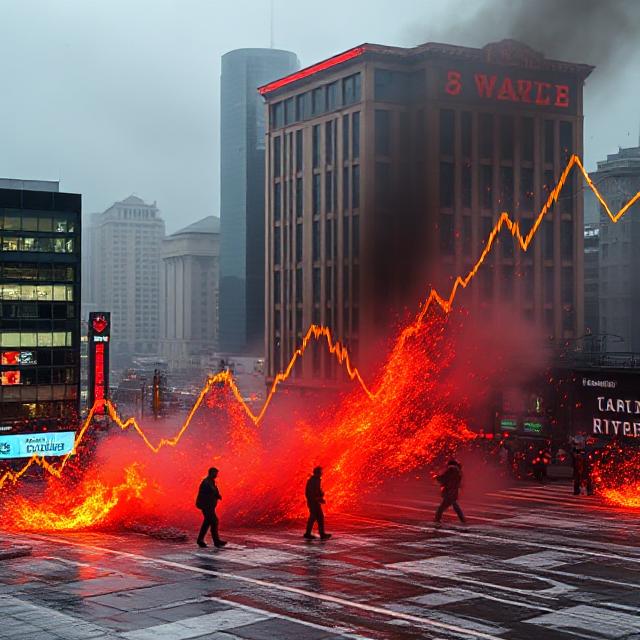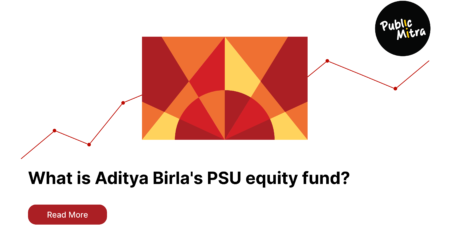Market Volatility Investment Strategy: Why Your Reaction Matters More Than Market Movement
The financial markets are experiencing another bout of volatility, and predictably, panic is spreading faster than the actual market decline. Headlines scream about market crashes, social media buzzes with doomsday predictions, and investors are frantically checking their portfolios every few minutes. But here’s the uncomfortable truth that successful investors have learned: volatility isn’t the enemy, your reaction is.
Understanding Market Volatility: The Natural Rhythm of Financial Markets
Market volatility represents the degree of price fluctuation in financial markets over time. It’s not an anomaly or a sign that something is fundamentally broken – it’s the natural heartbeat of capitalism. Stock market volatility has been a constant companion of investors since the inception of organized exchanges, and it will continue long after we’re gone.
Historical data reveals that the S&P 500 experiences an average intra-year decline of approximately 14% annually, yet still manages to deliver positive returns in about 75% of years. This paradox illustrates a crucial point: temporary market dips are not only normal but often create the most lucrative investment opportunities for disciplined investors.
The psychology behind market volatility is fascinating. When markets rise, greed takes hold, and everyone becomes a genius investor. When they fall, fear dominates, and suddenly everyone’s an expert on why the sky is falling. This emotional pendulum creates inefficiencies that patient, rational investors can exploit.
The Investment Psychology Behind Market Panic
Investment psychology plays a pivotal role in how individuals respond to market volatility. The human brain is hardwired with survival instincts that served our ancestors well when facing physical threats but often work against us in financial markets. The same fight-or-flight response that helped humans escape predators now triggers panic selling when portfolios decline.
Loss aversion, a concept extensively studied in behavioral economics, explains why investors feel the pain of losses approximately twice as intensely as the pleasure of equivalent gains. This psychological bias leads to irrational decision-making during market downturns, causing investors to sell at precisely the wrong time – when prices are low and opportunities are abundant.
The phenomenon of herding behavior further amplifies market volatility. When investors see others selling, they assume those people know something they don’t, leading to cascade effects where rational analysis gives way to emotional contagion. This creates a self-fulfilling prophecy where fear of decline causes the very decline investors feared.
Why Market Dips Are Actually Buying Opportunities
Contrarian investors understand a fundamental truth: the best investment opportunities often arise when others are most fearful. Market dips represent periods when high-quality companies trade at discounted prices, much like a luxury store having a clearance sale. The key is having the emotional fortitude and financial resources to act when others are paralyzed by fear.
Consider the most successful investors in history – Warren Buffett, Peter Lynch, John Templeton – they all share one common trait: they viewed market volatility as their friend, not their enemy. Buffett’s famous maxim, “Be fearful when others are greedy and greedy when others are fearful,” encapsulates this contrarian approach perfectly.
Dollar-cost averaging during volatile periods can be particularly effective. By consistently investing fixed amounts regardless of market conditions, investors automatically buy more shares when prices are low and fewer when prices are high. This mechanical approach removes emotion from the equation and often results in better long-term returns than trying to time the market.
The Long-Term Investment Approach: Time in Market vs Timing the Market
One of the most persistent myths in investing is that successful investors can consistently time the market – buying at bottoms and selling at tops. Academic research and real-world evidence consistently debunk this notion. Even professional money managers, with access to sophisticated research and analysis tools, fail to consistently time markets successfully.
The mathematical reality is stark: missing just the best 10 trading days over a 20-year period can reduce investment returns by approximately 50%. Since the best trading days often occur during or immediately after the worst periods, investors who sell during market volatility frequently miss the subsequent recovery.
Long-term investment approach focuses on time in the market rather than timing the market. This strategy recognizes that while short-term market movements are essentially random and unpredictable, long-term trends are driven by fundamental economic forces like productivity growth, innovation, and demographic changes.
Historical analysis reveals that holding periods of 10 years or more dramatically reduce the probability of losses in diversified equity portfolios. The stock market has never experienced a negative 20-year return period, despite numerous interim crises, crashes, and corrections.
Portfolio Management During Market Volatility
Effective portfolio management during volatile periods requires a combination of strategic planning and emotional discipline. The foundation begins with proper asset allocation – the mix of stocks, bonds, and other investments that aligns with your risk tolerance, investment horizon, and financial goals.
Diversification serves as the investor’s first line of defense against market volatility. By spreading investments across different asset classes, sectors, geographic regions, and company sizes, investors can reduce portfolio volatility without necessarily sacrificing returns. When one area underperforms, others may compensate, smoothing the overall portfolio experience.
Rebalancing during volatile periods can enhance returns while maintaining target risk levels. This involves selling assets that have outperformed (and become overweight in the portfolio) and buying those that have underperformed (and become underweight). This systematic approach forces investors to sell high and buy low, counteracting emotional biases.
Having adequate cash reserves – typically three to six months of expenses for emergency funds – provides psychological comfort during market downturns. This cash cushion prevents the need to sell investments at inopportune times and may provide capital to take advantage of exceptional opportunities.
Emotional Investing Mistakes to Avoid
The investment graveyard is littered with the portfolios of emotional investors who let fear and greed drive their decisions. Understanding and avoiding these common mistakes can mean the difference between investment success and failure.
Panic selling during market downturns is perhaps the most destructive emotional investing mistake. Investors who sell during market volatility lock in their losses and miss subsequent recoveries. Studies show that the average investor significantly underperforms market indices, primarily due to poor timing decisions driven by emotions.
Chasing performance – buying investments after they’ve already experienced significant gains – represents another emotional trap. This behavior stems from recency bias, where investors extrapolate recent trends indefinitely into the future. By the time an investment strategy becomes popular enough to attract widespread attention, it’s often approaching the end of its outperformance cycle.
Overconfidence during bull markets leads investors to take excessive risks, concentrate their portfolios in a few positions, or abandon diversification principles. This hubris often proves costly when market conditions change.
Market Corrections: Historical Perspective and Recovery Patterns
Market corrections – defined as declines of 10% or more from recent highs – occur regularly throughout market history. Since 1950, the S&P 500 has experienced corrections approximately once every two years, with the average correction lasting about four months and declining roughly 15%.
Bear markets, defined as declines of 20% or more, are less frequent but more severe. The average bear market lasts about 11 months and sees declines of approximately 30%. However, the subsequent bull markets typically last much longer and deliver much larger gains, more than compensating for the temporary declines.
Understanding these historical patterns provides perspective during current market volatility. What feels like a catastrophic decline is often just a normal correction within a longer-term upward trend. This knowledge can help investors maintain discipline during difficult periods.
The recovery patterns following major market declines are remarkably consistent. Markets often recover faster than investors expect, with the strongest gains frequently occurring in the early stages of recovery when pessimism remains high and many investors are still on the sidelines.
Building Wealth Through Market Volatility
Wealthy individuals and institutional investors often view market volatility differently than typical retail investors. Rather than seeing volatility as a threat to their wealth, they recognize it as an opportunity to build wealth. This mindset shift is crucial for long-term investment success.
The wealthy typically maintain higher cash reserves during good times, providing dry powder to deploy during market downturns. They also tend to have longer investment horizons, allowing them to ride out temporary volatility in pursuit of longer-term gains.
Wealthy investors often employ strategies like tax-loss harvesting during volatile periods, selling losing positions to offset capital gains and reduce tax liabilities while maintaining their desired asset allocation through similar investments.
They also understand the power of compounding returns over long periods. Small differences in annual returns compound into massive differences in wealth over decades. By avoiding the emotional mistakes that plague typical investors, wealthy individuals capture more of the market’s long-term returns.
Practical Strategies for Navigating Market Volatility
Developing a written investment policy statement before market volatility strikes is crucial. This document should outline your investment objectives, risk tolerance, time horizon, and predetermined responses to various market scenarios. Having this roadmap helps prevent emotional decision-making during stressful periods.
Implementing systematic investment strategies reduces the emotional burden of investment decisions. Automatic contributions to investment accounts, systematic rebalancing, and predetermined rules for when to take profits or cut losses can help maintain discipline during volatile periods.
Limiting exposure to financial media during market downturns can preserve mental health and prevent emotional decision-making. The constant barrage of negative headlines and expert predictions often creates more anxiety than actionable insights.
Building and maintaining an emergency fund provides peace of mind and prevents the need to sell investments during market downturns. This financial cushion allows investors to take a longer-term perspective and even capitalize on opportunities that arise during volatile periods.
The Role of Professional Guidance
While individual investors can successfully navigate market volatility, professional guidance can provide valuable perspective and discipline during challenging periods. Financial advisors often serve as behavioral coaches, helping investors stick to their long-term plans when emotions run high.
Professional money managers typically have experience navigating multiple market cycles, providing valuable perspective on current conditions relative to historical norms. They can also provide access to investment strategies and vehicles that may not be available to individual investors.
However, it’s important to choose advisors who share your long-term perspective and won’t encourage frequent trading or market timing strategies. The best advisors focus on helping clients achieve their long-term financial goals rather than trying to beat the market in the short term.
Conclusion: Embracing Volatility as Your Ally
Market volatility is not the enemy of successful investing – emotional reactions to volatility are. By understanding the psychological biases that drive poor investment decisions, maintaining proper diversification, and focusing on long-term goals rather than short-term fluctuations, investors can not only survive market volatility but thrive because of it.
The next time markets experience a bout of volatility, remember that this represents an opportunity rather than a crisis. While others are panicking and selling at low prices, disciplined investors are quietly accumulating quality assets at discounted prices. The patient investor who can maintain discipline during these periods will ultimately be rewarded for their fortitude.
The impatient investors who sell during market downturns aren’t just making poor decisions for themselves – they’re creating opportunities for those with the wisdom to remain calm and the courage to act when others retreat. In this way, their emotional reactions become your advantage, and their panic becomes your profit.
Market volatility will continue as long as human emotions drive investment decisions alongside fundamental analysis. By understanding this dynamic and positioning yourself on the right side of it, you can transform volatility from a source of stress into a source of wealth creation. Remember: in investing, as in life, your reaction to circumstances often matters more than the circumstances themselves.












